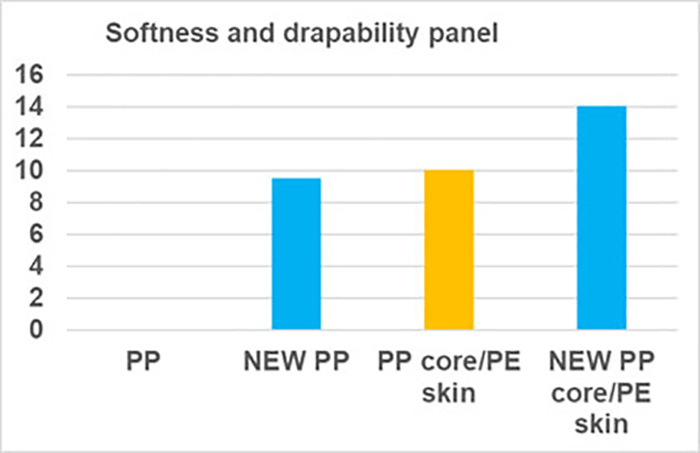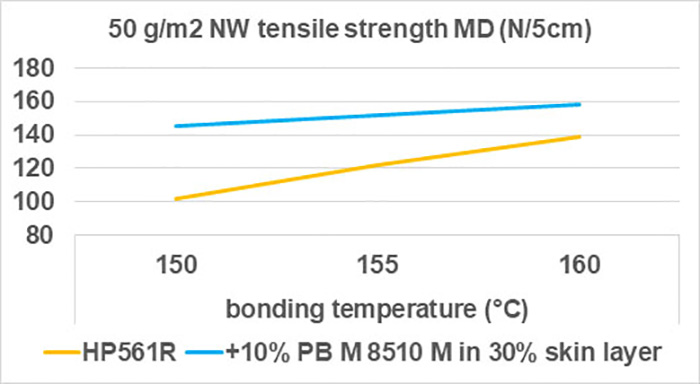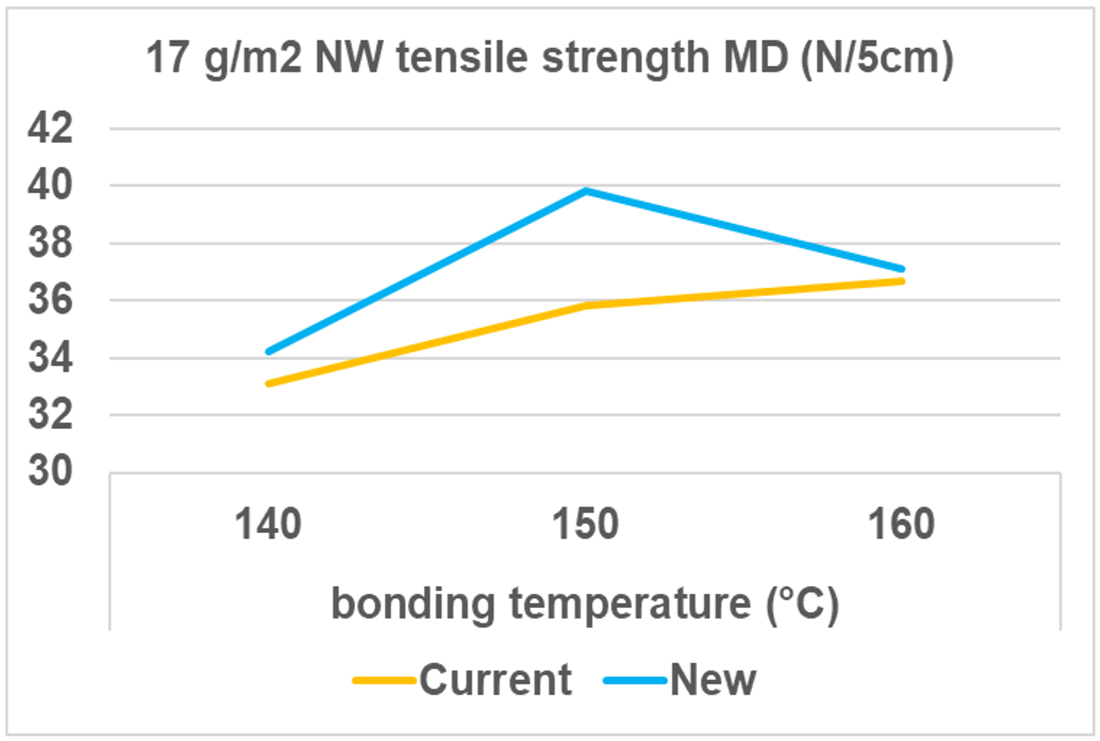Polypropylene (PP) is widely used in textile applications such as carpets and diapers. The end-uses and production processes require polymers with the highest purity.
PP is produced using a Ziegler–Natta catalyst (also called a heterogeneous catalyst), which is not 100% isotactic – it typically contains 3% atactic/amorphous polymer.
Our new generation of non-phthalate Ziegler–Natta catalyst enables a significant increase in the viscosity of the atactic polymer fraction, resulting in lower emissions of volatile components. The higher viscosity of the atactic polymer fraction also increases the mechanical properties of spunbond nonwovens.
Comfort is essential for textile products. By using our Spherizone polymerization technology we have modified the polymer structure of PP by evenly incorporating a record-high percentage of ethylene, which increases the textile softness.
The new PP grade is a fully recyclable mono-material, which represents an alternative to a conventional PP core/polyethylene (PE) sheath bicomponent solution. When using the new PP grade as the core material with a PE sheath, the fabric exhibits an unprecedented level of comfort.

The applications for recycled plastics obtained by mechanical recycling depend on their quality. To ease recycling, mono-material design is preferred. However, at present PP/PE mixtures are still used, and since these two polymers do not mix well, the resulting extruded film shows many visual defects.
The new PP grade is a fully recyclable mono-material, which represents an alternative to a conventional PP core/polyethylene (PE) sheath bicomponent solution.
By adding a tailored amount of Hiflex CA7600A from Catalloy polymerization technology proper mixing of PP with PE can be obtained, which results in good film quality. The homogeneity of the new polyolefin mixture is also evidenced by isotropic tensile properties.

Polybutylene-1 (PB-1) grades are the latest members of our polyolefins range. The extra methyl group present on the butene-1 monomer compared with the propene-1 makes PB-1 compatible with PP, but incompatible with PE.
The incompatibility between PE and PB-1 is used in seal-peel and re-closable applications in flexible packaging, while PB-1 is used as a sealing boost additive in biaxially oriented polypropylene (BOPP) films. Similarly, adding just 3% of Koattro PB M 8510 M into PP increases both the sealing strength of PP filaments and the resulting nonwoven tensile strength.

Other applications of PB-1 grades in textile applications include the production of mono-material and recyclable polyolefin carpets, where our soft Koattro PB M 1200 M is used in the carpet backing, replacing latex or bitumen.


